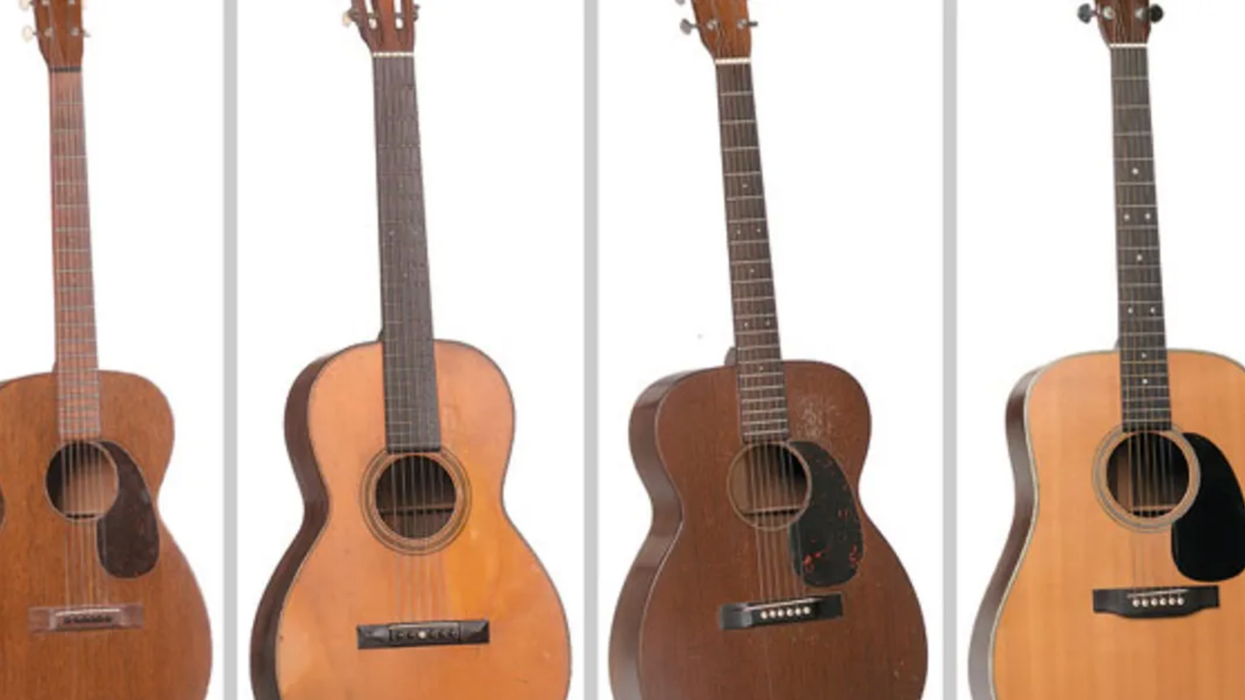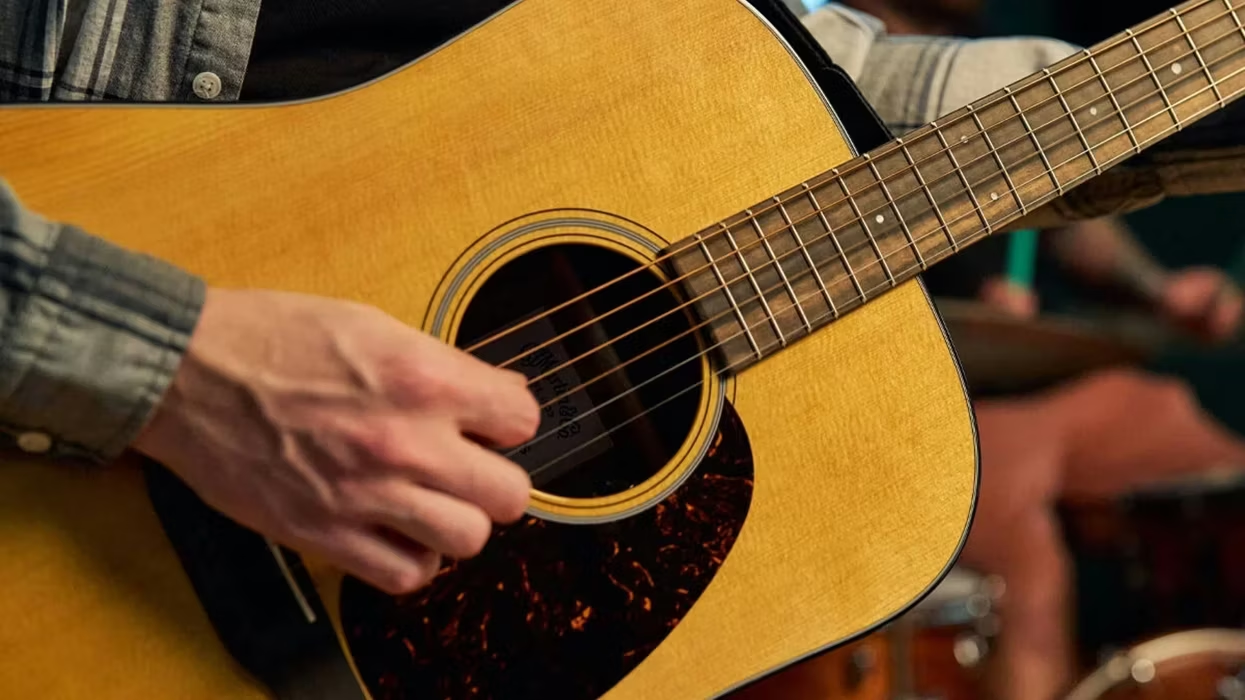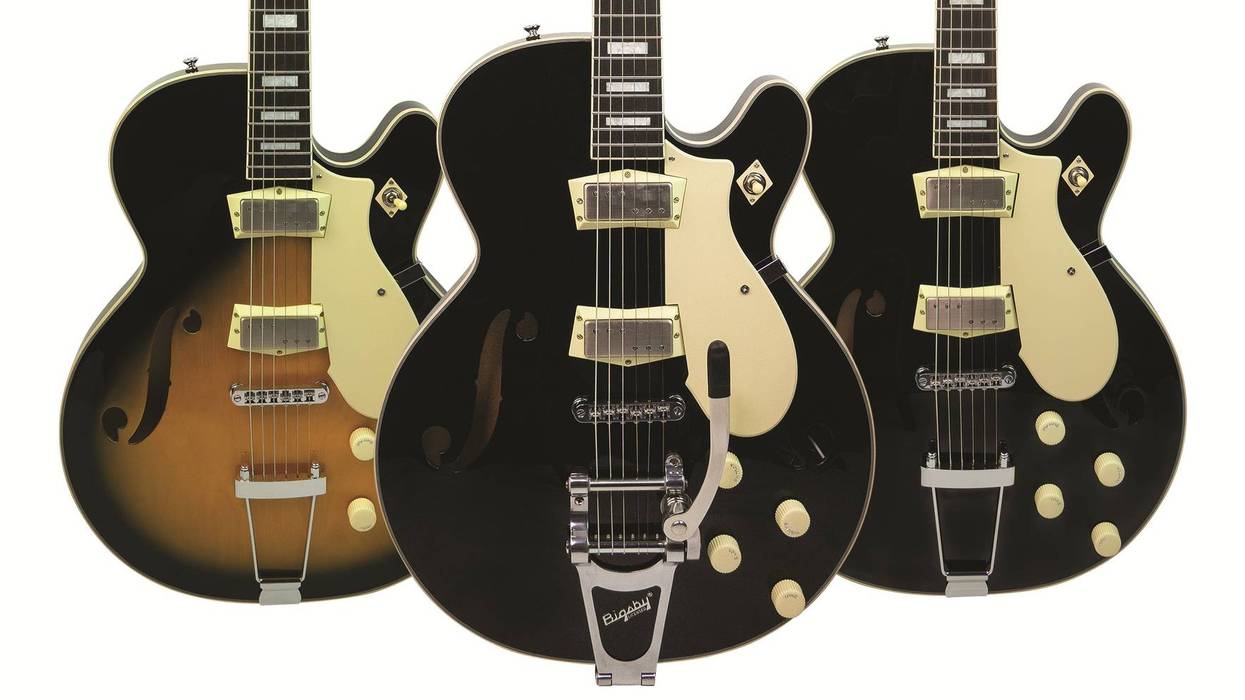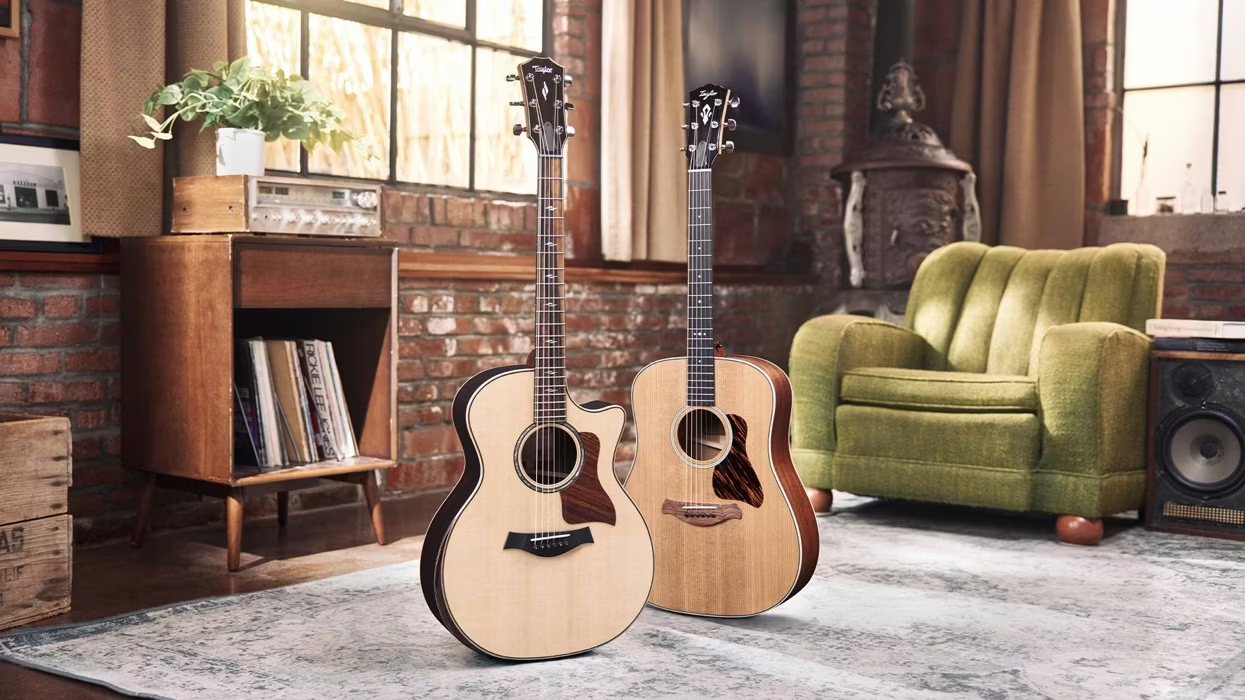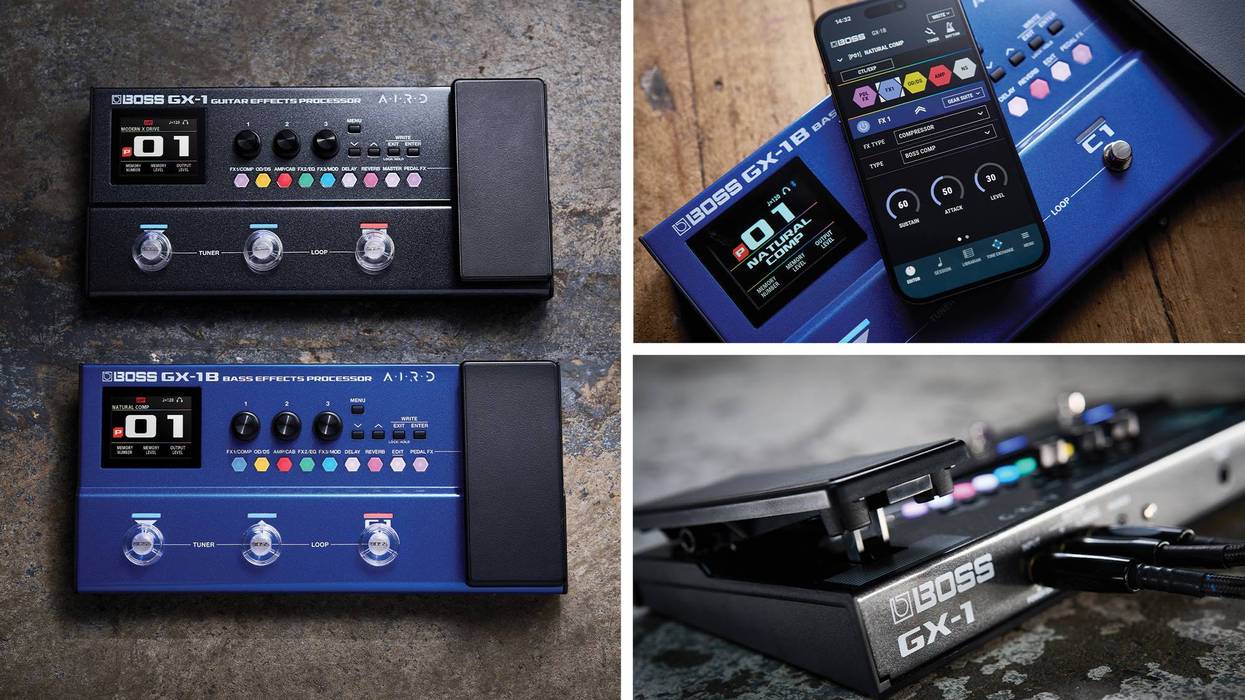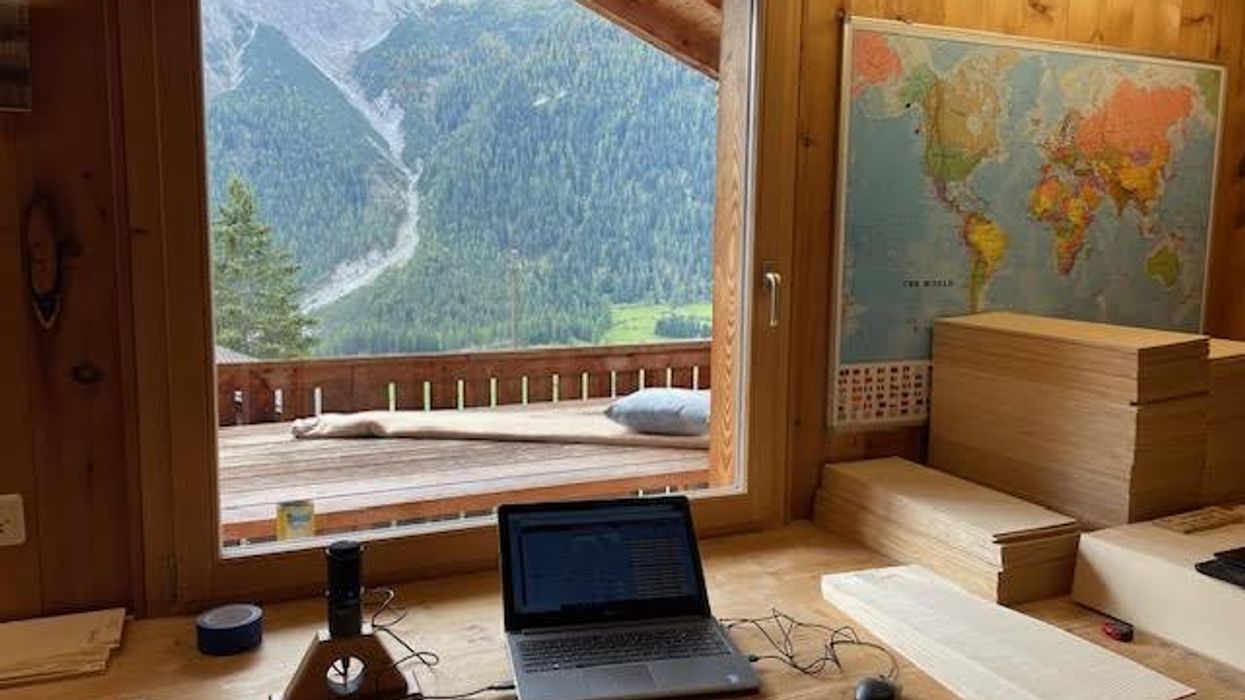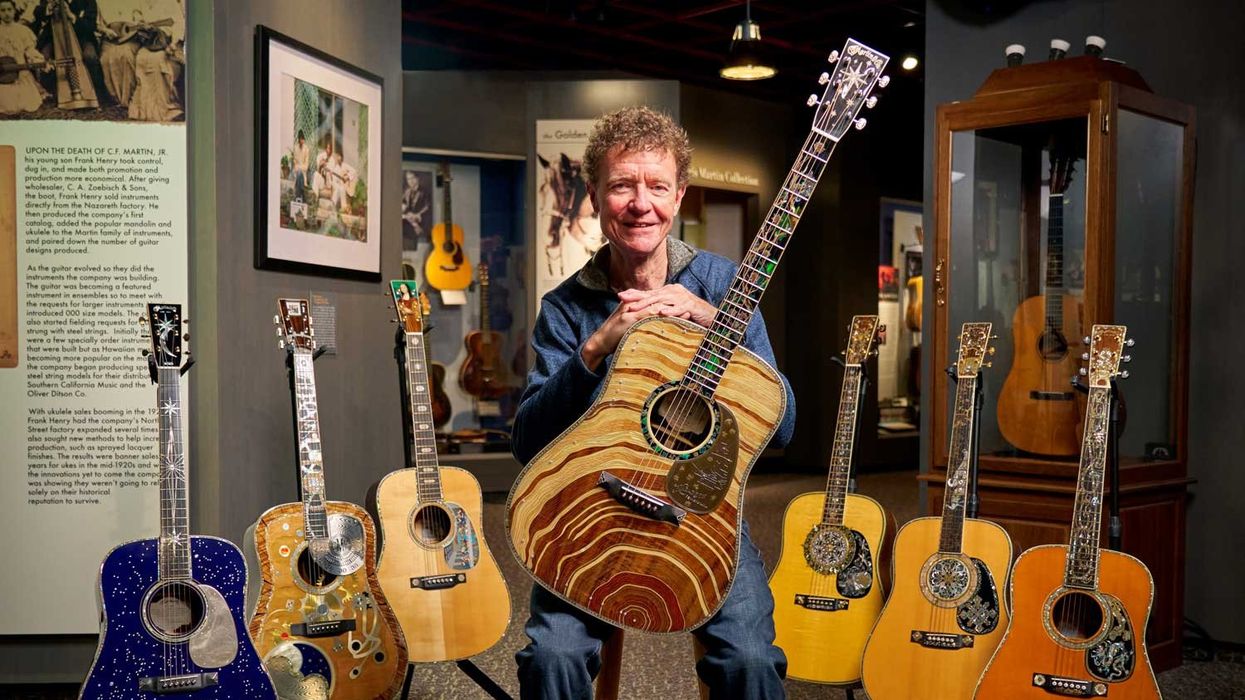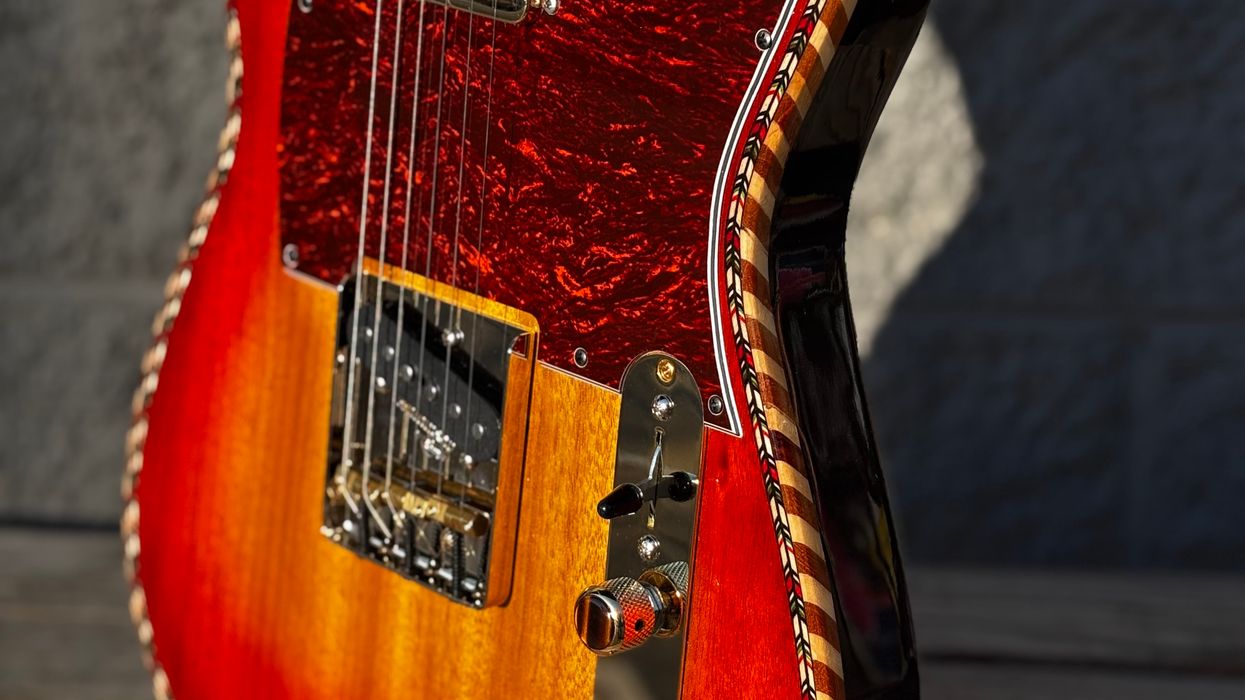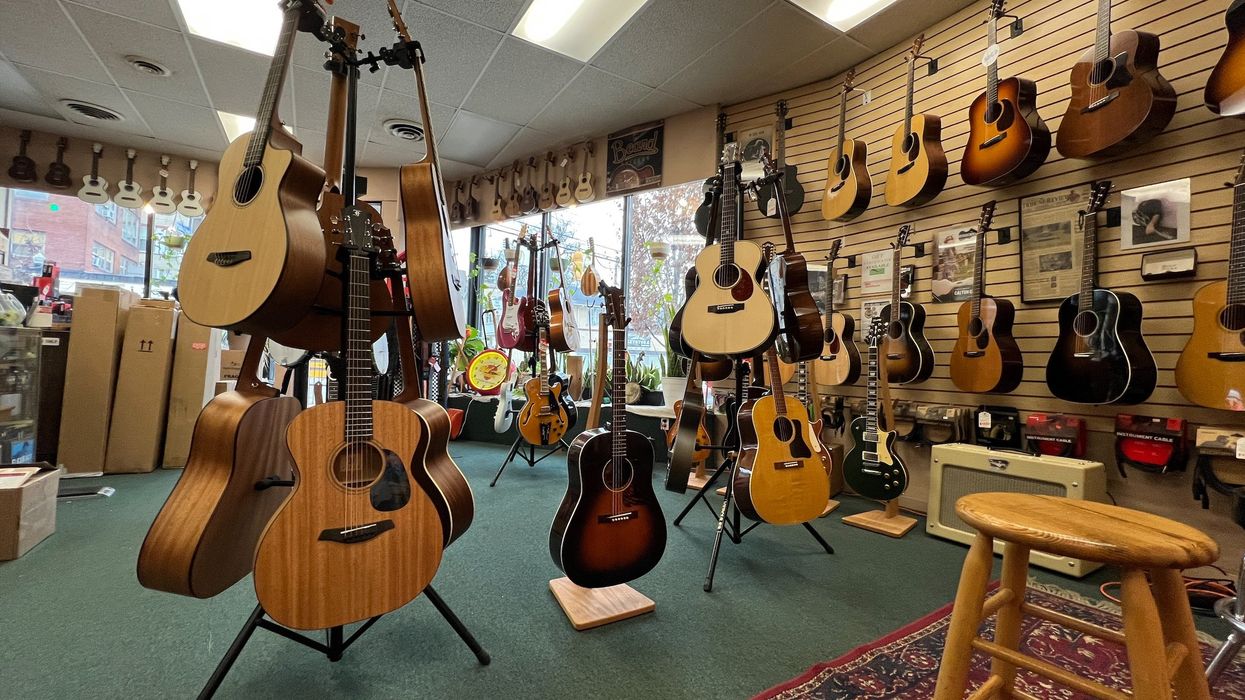After picking up and playing literally several thousand acoustic guitars of different sizes, shapes and tonewoods, we can start to make some generalizations about small versus large guitars. Of course, smaller guitars can be more comfortable to hold while larger instruments can be somewhat unwieldy. Tonally, smaller guitars tend to possess greater brightness or treble response, while bigger guitars (with larger air cavities in the body), at least have a greater potential for bass response.
Large vs. Small
For the purposes of this discussion, let’s define a large acoustic guitar as a dreadnought or jumbo and a smaller acoustic as any instrument with a 000 or OM (orchestra model) body or smaller. People expect big guitars to have a big sound, and expect small guitars to be somehow diminished in tone. The paradox is that smaller instruments can be disproportionately and shockingly powerful in their volume. In addition, smaller guitars can possess a better balance between bass and treble. Without excessive bass overtones or woofiness, smaller guitars can be less prone to feedback onstage, and because it is easier to add bass than subtract it in the studio, smaller guitars are typically capable of producing a cleaner recording.
Guitars can vary in scale length, and scale length has an impact on string tension. I am often asked to explain the differences between the traditional 000 guitars versus the OM. Both guitars look more or less the same, but the 000 is traditionally short scale (24.9") while the OM is long scale (25.4"). So what impact do these different scale lengths have upon each of these sizes?
Most guitar players know that the scale length of a stringed instrument is basically the distance between the nut and the saddle. Say that you’re playing a 25.4" or 25.5" (long) scale guitar. Even with light gauge strings, the strings are tight and the tonal response has a lot of punch. Now, if you take a capo and put it across the first fret, you are in effect shortening the scale length by almost 1-1/2". It’s obvious that now all of the notes on the neck are a half step above standard EADGBE tuning. To get the notes back to standard tuning, you must tune each string down a half step. What’s happened? The strings are now noticeably looser, more sensitive to the touch, more bendable, with perhaps a bit less volume or punch.
So in the simplest terms, a player who wants the greatest volume and projection might gravitate toward a longer scale instrument, while a player who wants the more delicate expressiveness of note bending might prefer a shorter scale instrument.

- Tonewoods. In general, resonant woods like rosewood accentuate the bass response. Lighter woods like mahogany influence the treble response. Harder woods like maple aid in projection.
- Size. Smaller guitars typically accentuate the high-end trebles. Larger guitars typically impact the more resonant bass frequencies.
- 12 versus 14-fret bodies. The extra internal air cavity above the soundhole on 12-fret guitars typically adds hollowness to the tone that is advantageous for fingerstyle techniques, but is not always good for rhythm strumming.
- Scale length. Longer scale lengths at the same pitch put strings under greater tension. Shorter scale lengths can be tuned up to higher pitches.
- Strings. Obviously, lighter strings are under less tension than medium strings—lighter stings bend easier and are lighter to the touch. Medium strings are stiffer with more volume.
I’ve heard many singer-songwriters say that they prefer the bassy warmth of the large dreadnought body as an appropriate accompaniment to their vocals. I’ve heard just as many fingerstylists and recording studio artists extol the virtues of smaller-bodied guitars for their clarity. You can acquire an assortment of different guitars to suit the variety of your playing needs, or gradually focus on a particular size and shape.
My best advice is to pick up and play as many different guitars as you can. Each instrument has its own personality. Having a basic understanding of how the many variables impact the tone and projection of an instrument will help you focus on what guitar is most right for your particular playing style.
[Updated 12/1/21]


